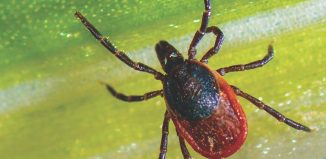Stroke prevention: aspirin use and lifestyle modifications
Aspirin and Plavix together are cause for concern in stroke
Last week, I wrote about the positive effects of medications and the complexities that chronic diseases add to the risk profile of stroke. In this article I will focus on the confusion around aspirin’s use in combination with another antiplatelet drug and its ideal preventive dose. Then, I will suggest lifestyle modifications that can help lower stroke risk.
Medication combination: negative impact
There are two antiplatelet medications that are sometimes given together in the hopes of reducing stroke recurrence — aspirin and Plavix (clopidogrel). The assumption was that these medications together would work better than either alone. However, in a randomized controlled trial, the gold standard of studies, this combination not only didn’t demonstrate efficacy improvement, but significantly increased the risk of major bleed and death (ISC 2012; Abstract LB 9-4504; www.clinicaltrials.gov NCT00059306).
Major bleeding risk was 2.1 percent with the combination versus 1.1 percent with aspirin alone, an almost twofold increase. In addition, there was a 50 percent increased risk of all-cause death with the combination, compared to aspirin alone. Patients were given 325 mg of aspirin and either a placebo or 75 mg of Plavix. The study was halted due to these deleterious effects. The American Heart Association recommends monotherapy for the prevention of recurrent stroke. If you are on the combination of drugs, please consult your physician.
Aspirin: low dose vs. high dose
Greater hemorrhagic (bleed) risk is also a concern with daily aspirin regimens greater than 81 mg, which is the equivalent of a single baby aspirin.
Aspirin’s effects are cumulative; therefore, a lower dose is better over the long term. Even 100 mg taken every other day was shown to be effective in trials. There are about 50 million patients who take aspirin chronically in the United States. If these patients all took 325 mg of aspirin per day — an adult dose — it would result in 900,000 major bleeding events per year (JAMA 2007;297:2018-2024). The ideal dose of aspirin to prevent a recurrent stroke is 81 mg.
Lifestyle modifications
On Dec. 20, 2011, I wrote about stroke prevention. A study showed that white fleshy fruits — apples, pears, bananas, etc. — and vegetables — cauliflower, mushrooms, etc. — decreased the risk of ischemic stroke by 52 percent. Not to be left out, the Nurses’ Health study showed that foods with flavanones, found mainly in citrus fruits, decreased the risk of ischemic stroke by 19 percent (Stroke 2012;43:946-951).
The authors suggest that the reasons for the reduction may have to do with the ability of flavanones to reduce inflammation and/or improve blood vessel function. This study involved about 70,000 women with 14 years of follow-up. I mention both of these trials together because of the importance of fruits in prevention of ischemic (clot-based) stroke.
Alcohol’s effect
I am continuously asked about my stand on alcohol consumption. There are definite benefits to drinking alcohol in moderation, and stroke reduction appears to be one. Findings published in March from the Nurses’ Health Study showed a decreased risk of stroke by 17-21 percent in women who consumed between half a glass to one glass of alcohol per day, compared to those who did not (Stroke 2012; 43: 939-945). A serving size is 4 ounces of wine or a 12-ounce beer. This was a very large observational study involving 83,000 women over 26 years.
The authors hypothesize that the effect has to do with improving the lipid profile and/or preventing clot formation. Does this mean if you don’t drink you’re at a disadvantage? Not at all! There are plenty of other lifestyle modifications you can make to reduce your risk equally or more, including eating flavanone-full foods, such as citrus fruits, as well as white fleshy fruits. In addition, the Mediterranean and Dash diets reduce stroke risk. In one recent study, the Mediterranean diet was shown to reduce the risk of ischemic stroke by a resounding 63 percent (J. Nutr. 2011;141(8):1552-1558). Too much alcohol can increase your risk of atrial fibrillation, an arrhythmia that increases stroke risk.
Fiber’s important role
Fiber plays a key role in reducing the risk of a hemorrhagic stroke. In a study involving over 78,000 women, those who consumed the most fiber had a total stroke risk reduction of 34 percent and a 49 percent risk reduction in hemorrhagic stroke. The type of fiber used in this study was cereal fiber, or fiber from whole grains.
Refined grains, however, increased the risk of hemorrhagic stroke twofold (Am J Epidemiol. 2005 Jan 15;161(2):161-9). When eating grains, it is important to have whole grains. Read labels carefully, since some products that claim to have whole grains contain unbleached or bleached wheat flour which are refined.
Fortunately, there are many options to help reduce the risk or the recurrence of a stroke. Ideally, the best option would involve lifestyle modifications. Some patients may need to take statins, even with lifestyle modifications. However, statins’ side-effect profile is dose related. Therefore, if you need to take a statin, lifestyle changes may help lower your dose and avoid harsh side effects. Once you have had a stroke, it is likely that you will remain on at least one medication — low-dose aspirin — since the risk of a second stroke is high.
Dr. Dunaief is a speaker, author and local lifestyle medicine physician focusing on the integration of medicine, nutrition, fitness and stress management. For further information, go to the website www.medicalcompassmd.com and/or consult your personal physician.






